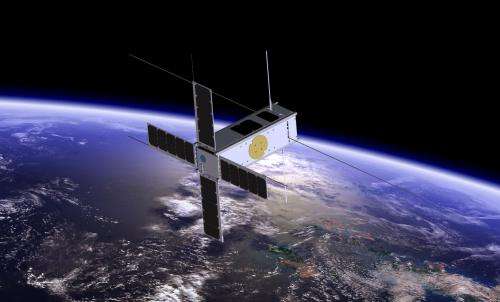Picasso CubeSat to investigate upper layers of the atmostphere

The PICosatellite for Atmospheric and Space Science Observations (Picasso) CubeSat, designed to investigate the upper layers of Earth's atmosphere.
Developed for ESA by the Belgian Institute of Space Aeronomy with VTT Finland and the UK's Clyde Space, Picasso will measure the distribution of ozone in the stratosphere and profile the temperature of the mesosphere and the electron density in the ionosphere.
Just 30x10x10 cm in size, the CubeSat will use a miniaturised multispectral imager for atmospheric 'limb sounding' with the Sun as the light source, and a multineedle 'Langmuir probe' sampling the electron density of the space around it.
CubeSats are standardised pico- and nanosatellites formed in cubes of 10 cm per side, with a maximum mass of 1.5 kg per cube, intended to make access to space affordable for small companies, research institutes and universities. One-, two- or three-cube CubeSats are currently being flown.
Picasso is one of a number of CubeSat missions being backed by the In-Orbit Demonstration element of ESA's General Support Technology Programme. It will be launched in 2016 as part of QB50, a network of 50 CubeSats to probe largely unexplored layers of Earth's atmosphere.
Provided by European Space Agency




















